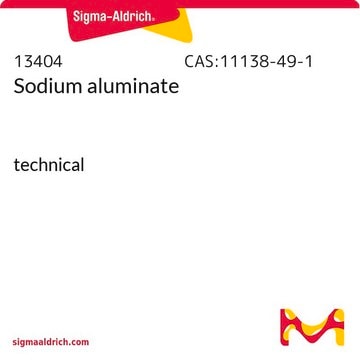225568
Tetrapropylammonium bromide
98%
Synonym(s):
N,N,N-Tripropyl-1-propanaminium bromide
Sign Into View Organizational & Contract Pricing
All Photos(3)
About This Item
Linear Formula:
(CH3CH2CH2)4N(Br)
CAS Number:
Molecular Weight:
266.26
Beilstein:
3567846
EC Number:
MDL number:
UNSPSC Code:
12352107
PubChem Substance ID:
NACRES:
NA.22
Recommended Products
Assay
98%
form
crystals
SMILES string
[Br-].CCC[N+](CCC)(CCC)CCC
InChI
1S/C12H28N.BrH/c1-5-9-13(10-6-2,11-7-3)12-8-4;/h5-12H2,1-4H3;1H/q+1;/p-1
InChI key
BGQMOFGZRJUORO-UHFFFAOYSA-M
Looking for similar products? Visit Product Comparison Guide
General description
Tetrapropylammonium bromide (TPAB) is a quaternary ammonium salt. It is commonly used as a phase-transfer catalyst to facilitate charged species transfer between phases during organic synthesis and various chemical reactions. It also exhibits environmental compatibility, operational simplicity, non-corrosiveness, and ease of reusability, rendering it a suitable material for organic synthesis .
Application
Tetrapropylammonium bromide is used as a structure-directing agent in the synthesis of:
- ZSM-5 zeolite, which is a major catalyst in the petroleum and fine chemical industries.
- Microporous and mesoporous materials that have potential applications in electronics (conducting polymers) and catalysis.
Storage Class Code
11 - Combustible Solids
WGK
WGK 3
Flash Point(F)
Not applicable
Flash Point(C)
Not applicable
Personal Protective Equipment
dust mask type N95 (US), Eyeshields, Gloves
Certificates of Analysis (COA)
Search for Certificates of Analysis (COA) by entering the products Lot/Batch Number. Lot and Batch Numbers can be found on a product’s label following the words ‘Lot’ or ‘Batch’.
Already Own This Product?
Find documentation for the products that you have recently purchased in the Document Library.
Customers Also Viewed
A Facile Synthesis of Xanthene-1, 8 (2H)-dione Derivatives by Using Tetrapropylammonium Bromide as Catalyst
Poursattar Marjani A, et al.
Journal of Heterocyclic Chemistry, 55(6), 1324-1330 (2018)
Hui Wang et al.
Physical chemistry chemical physics : PCCP, 17(32), 20636-20646 (2015-07-24)
The (13)C NMR chemical shift moving upfield indicates the main model of π-holeX(-) bond between cyanuric chloride/1,3,5-triazine (3ClN/3N), which possess both the π-hole and σ-hole, and X(-). (13)C NMR and UV absorption titration in acetonitrile confirmed that the bonding abilities
Yong Peng et al.
Angewandte Chemie (International ed. in English), 54(19), 5709-5712 (2015-03-19)
The fabrication of MFI zeolite films with particular b-axis orientation is especially fascinating. Unlike the conventional alkaline or hydrofluoric acid (HF) assisted neutral synthesis route, here we develop a novel neutral synthesis solution system of TPABr/fumed silica/H2 O without the
Sarika Goel et al.
Journal of the American Chemical Society, 136(43), 15280-15290 (2014-10-15)
The encapsulation of metal clusters (Pt, Ru, Rh) within MFI was achieved by exchanging cationic metal precursors into a parent zeolite (BEA, FAU), reducing them with H2 to form metal clusters, and transforming these zeolites into daughter structures of higher
Joel G Davis et al.
The journal of physical chemistry. B, 119(29), 9417-9422 (2014-11-22)
Raman multivariate curve resolution (Raman-MCR), as well as quantum and classical calculations, are used to probe water structural changes in the hydration shells of carboxylic acids and tetraalkyl ammonium ions with various aliphatic chain lengths. The results reveal that water
Our team of scientists has experience in all areas of research including Life Science, Material Science, Chemical Synthesis, Chromatography, Analytical and many others.
Contact Technical Service












